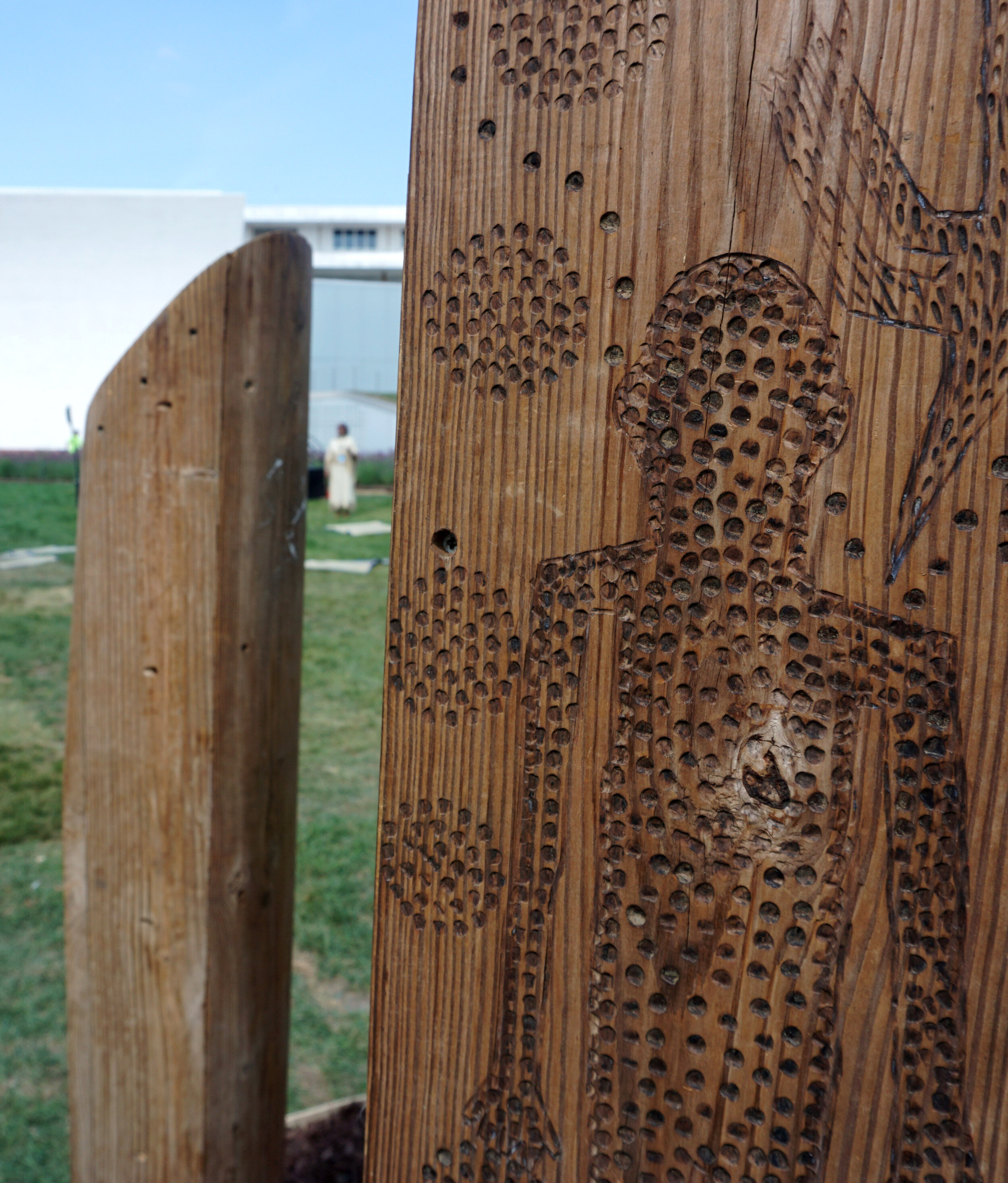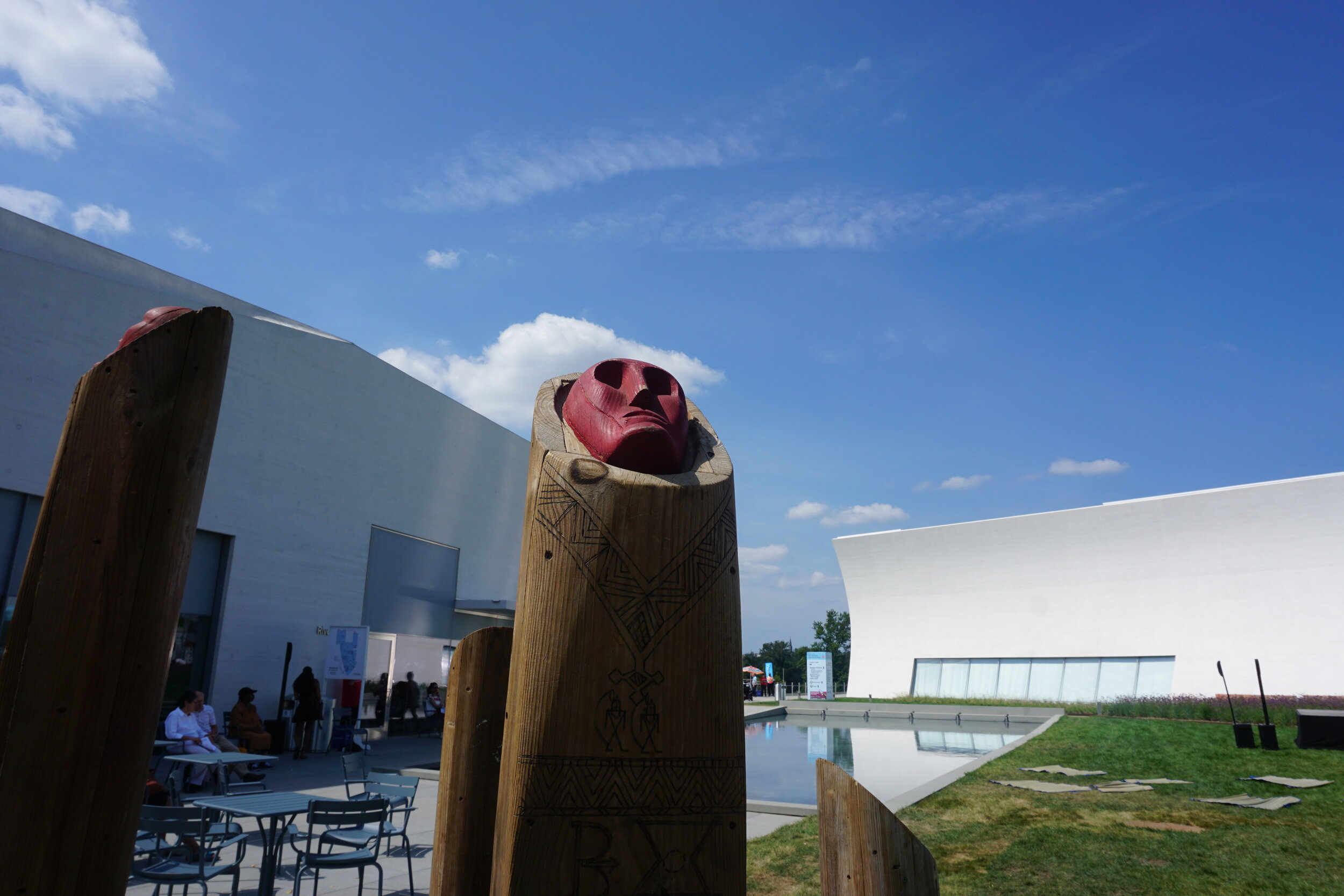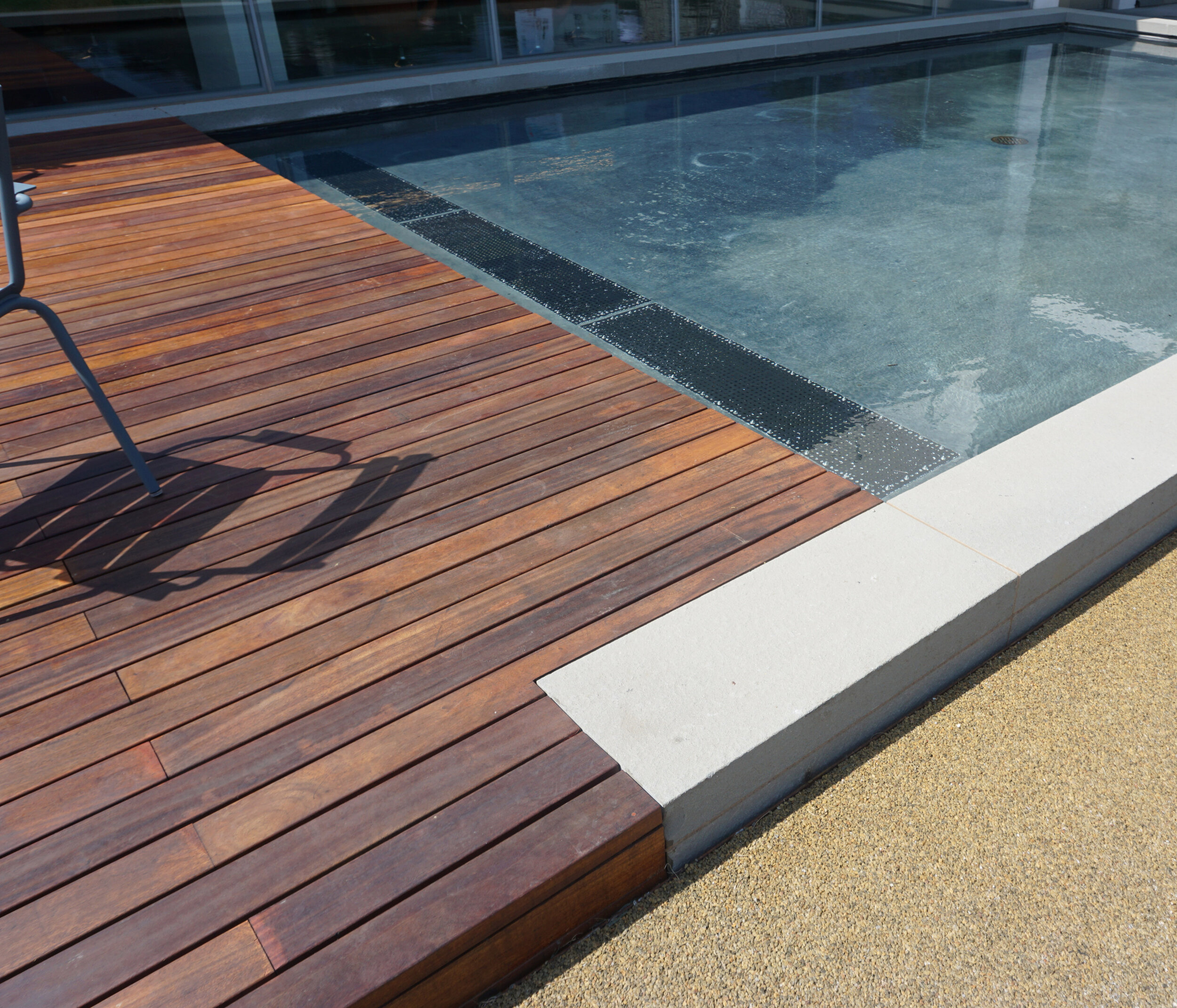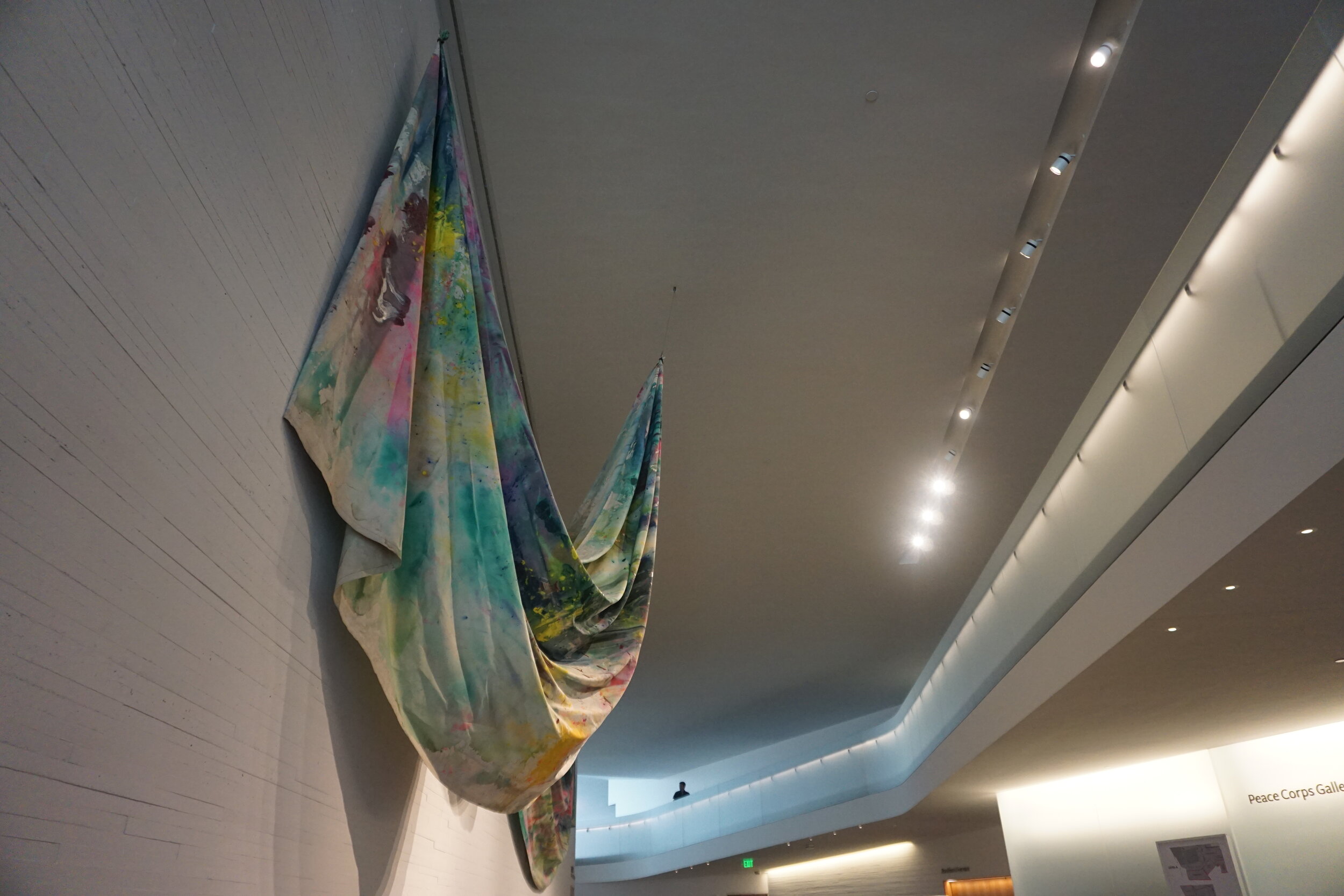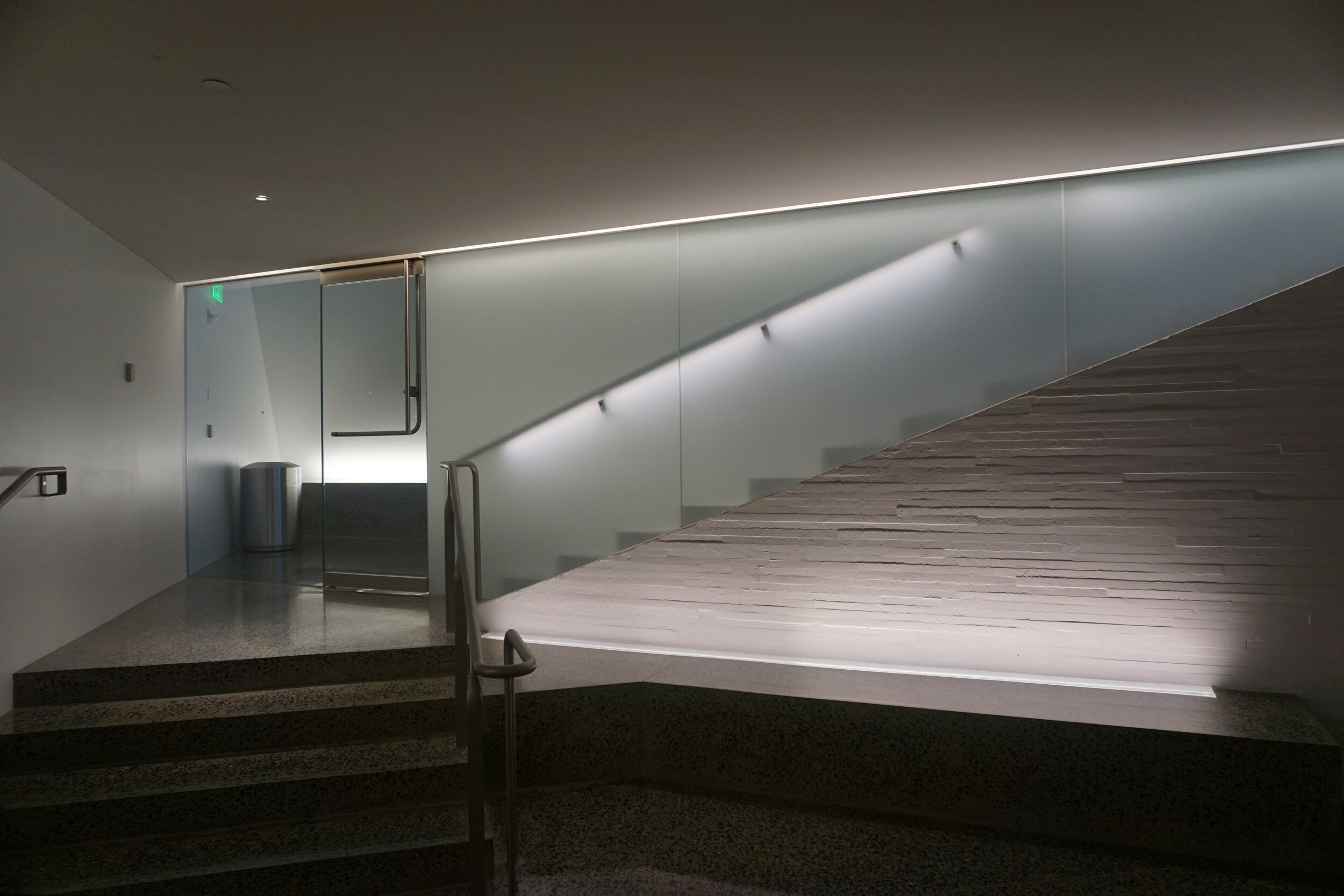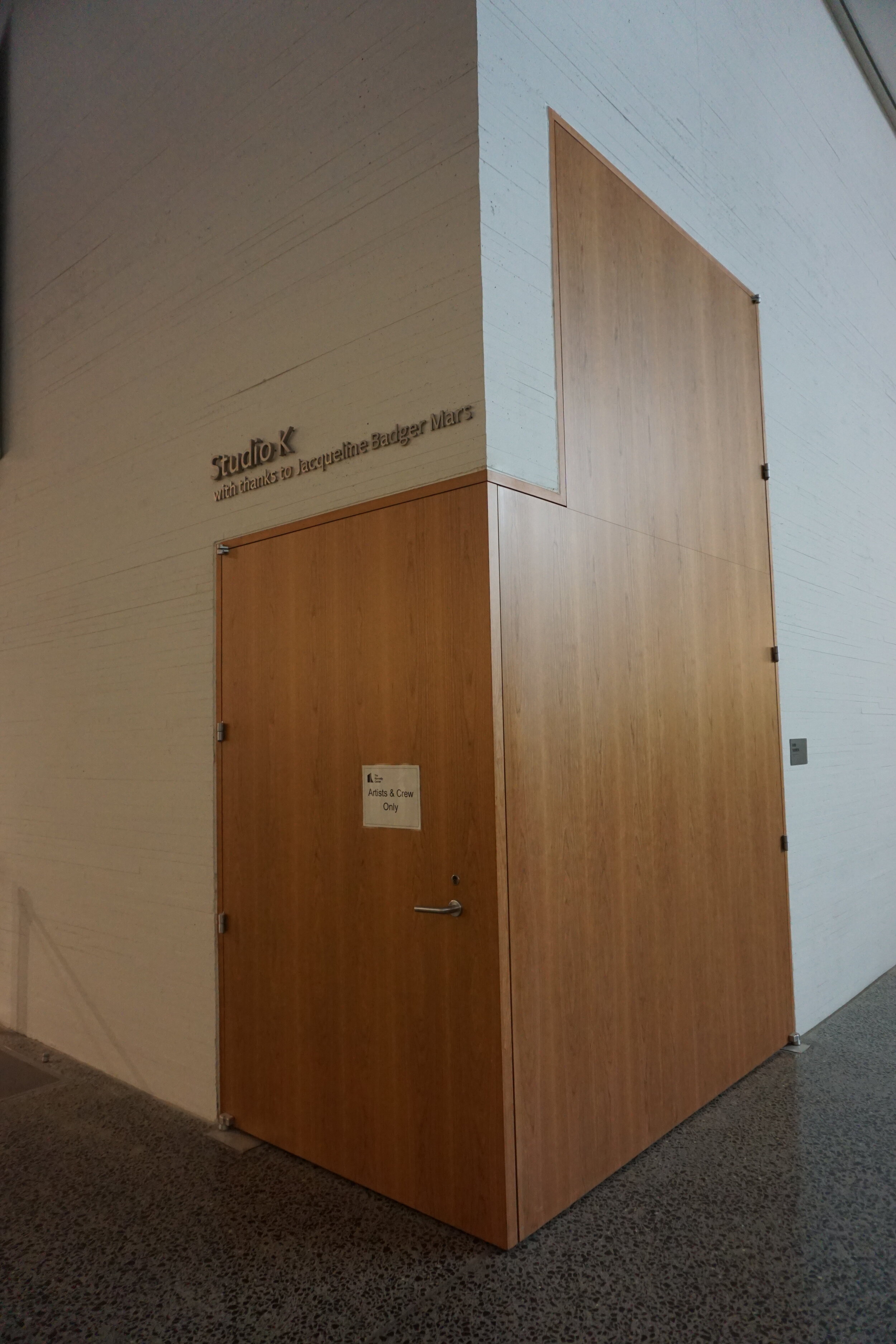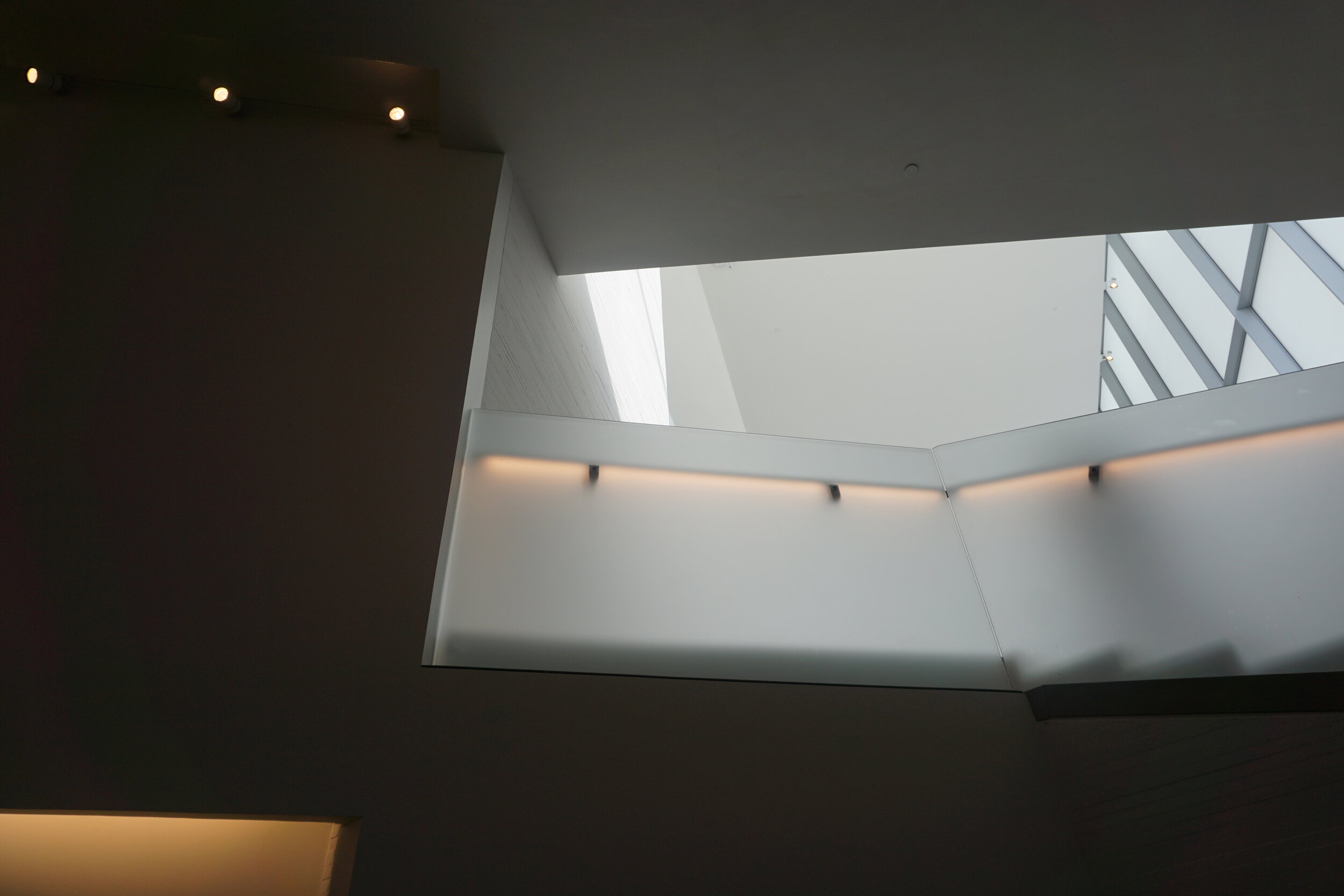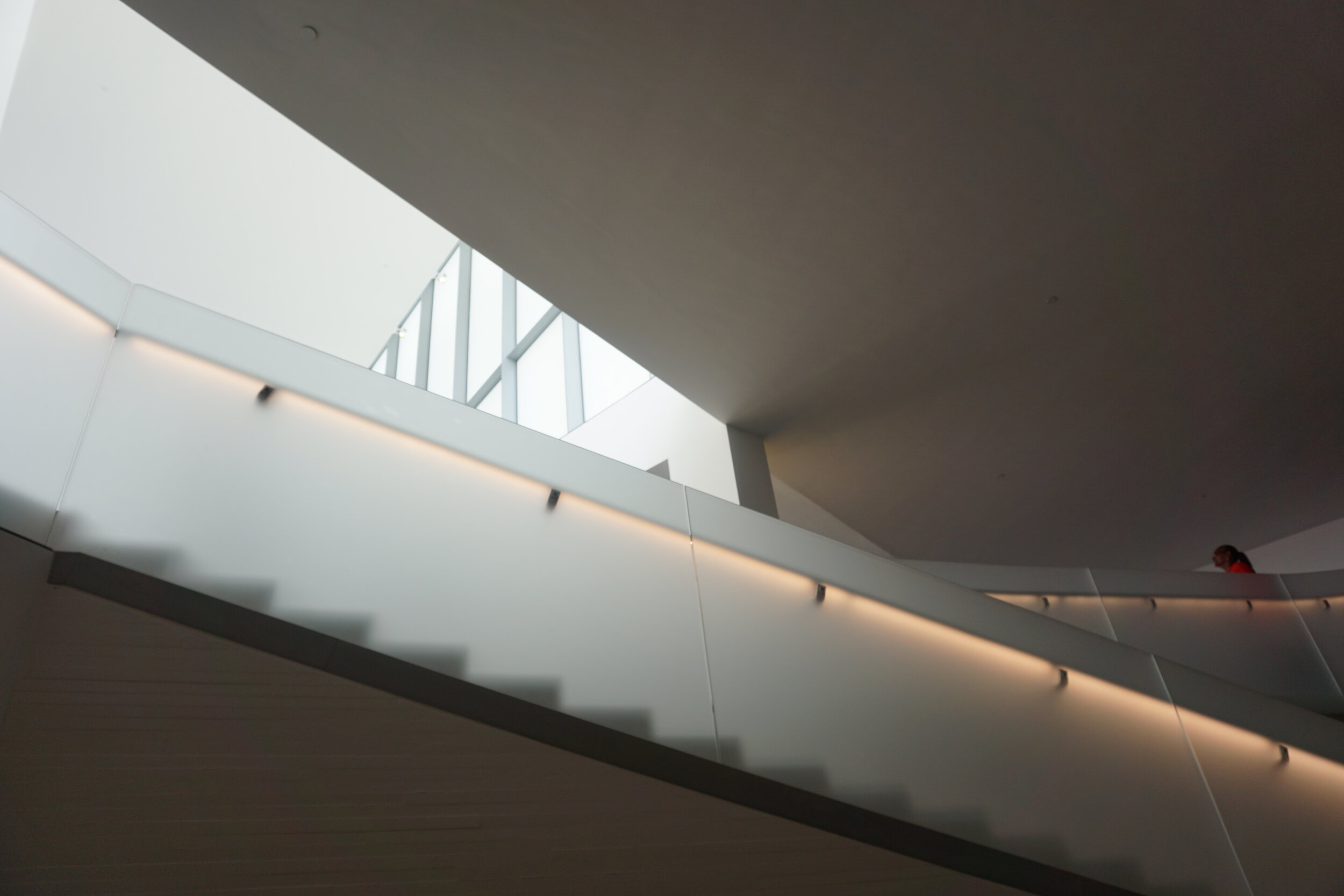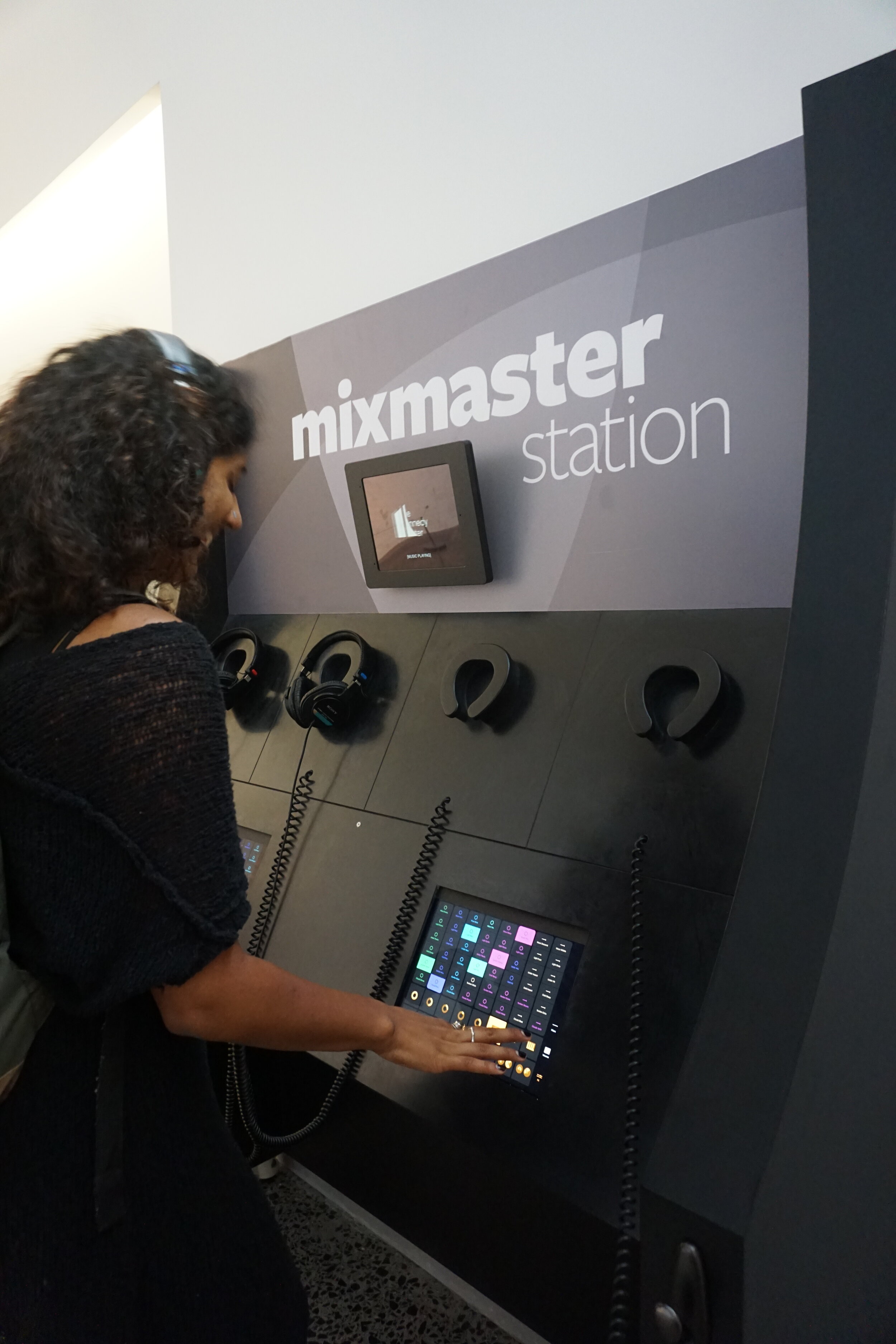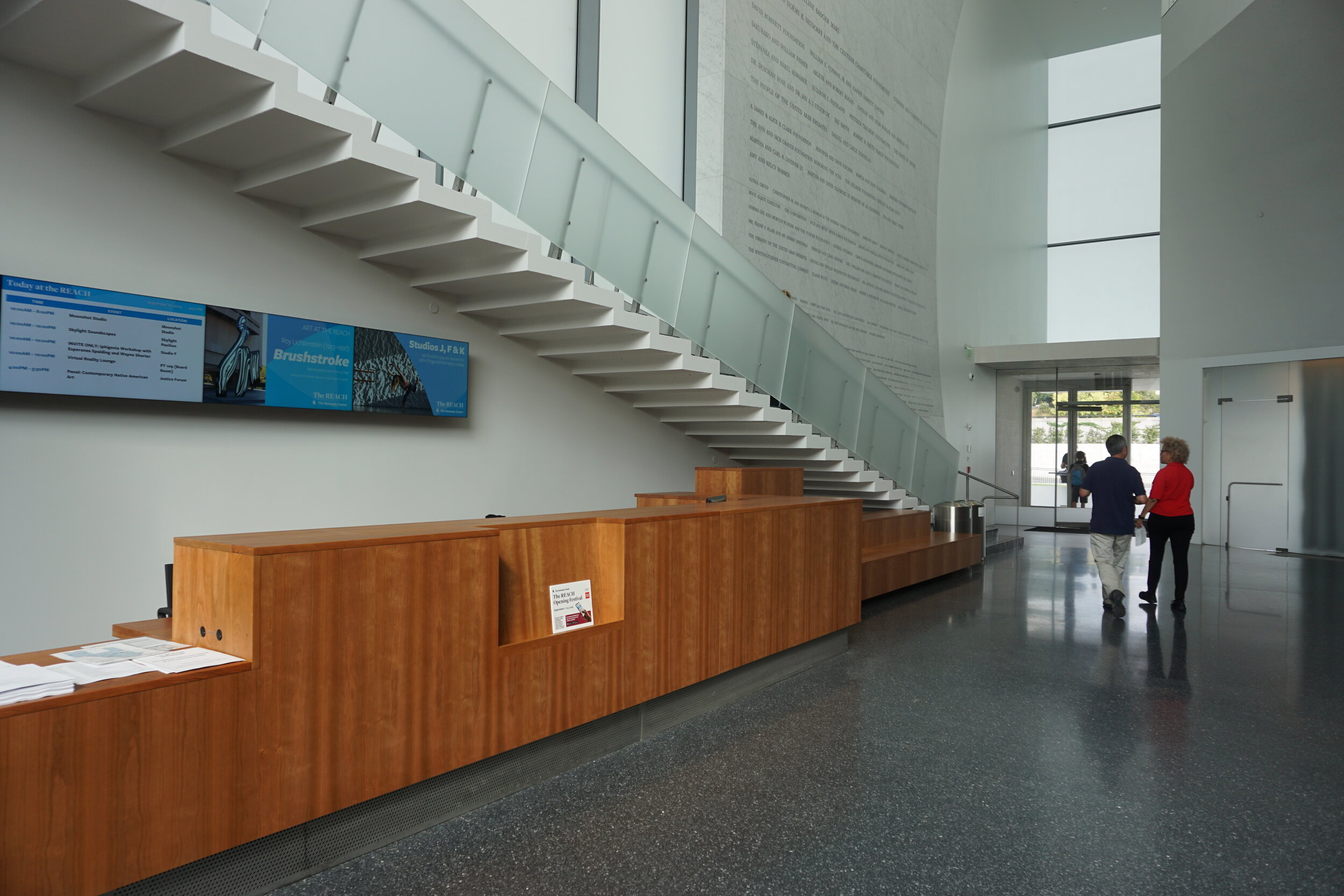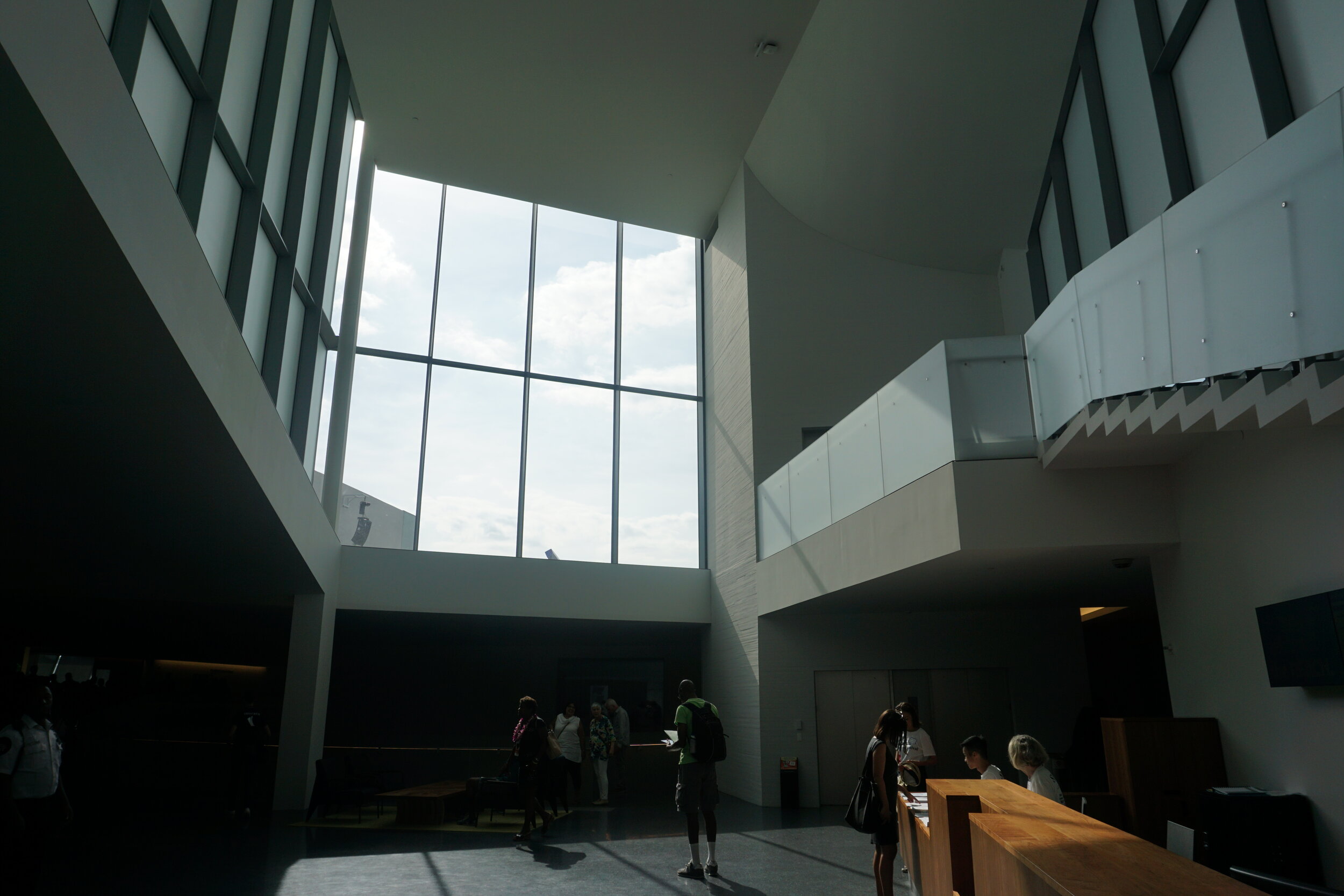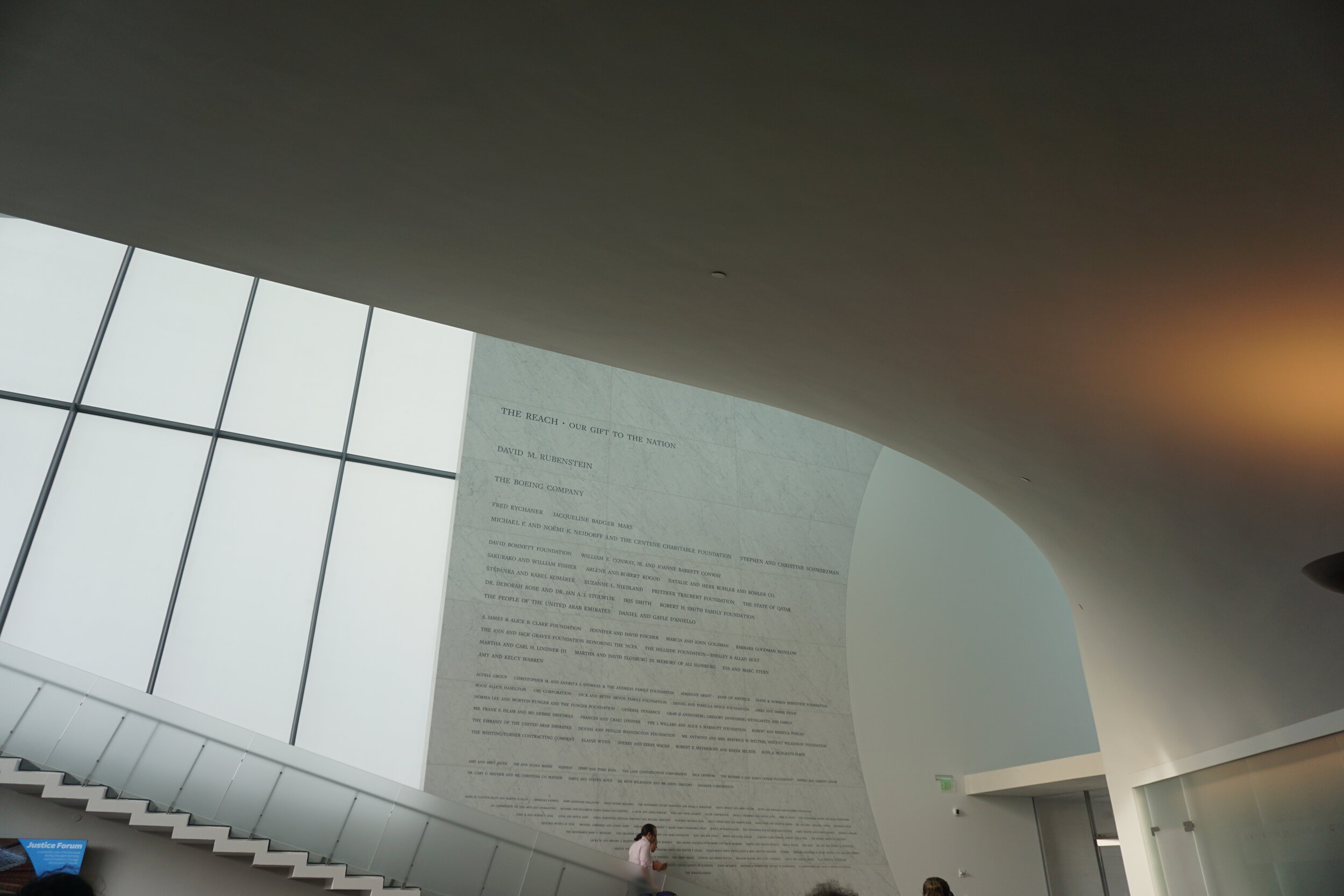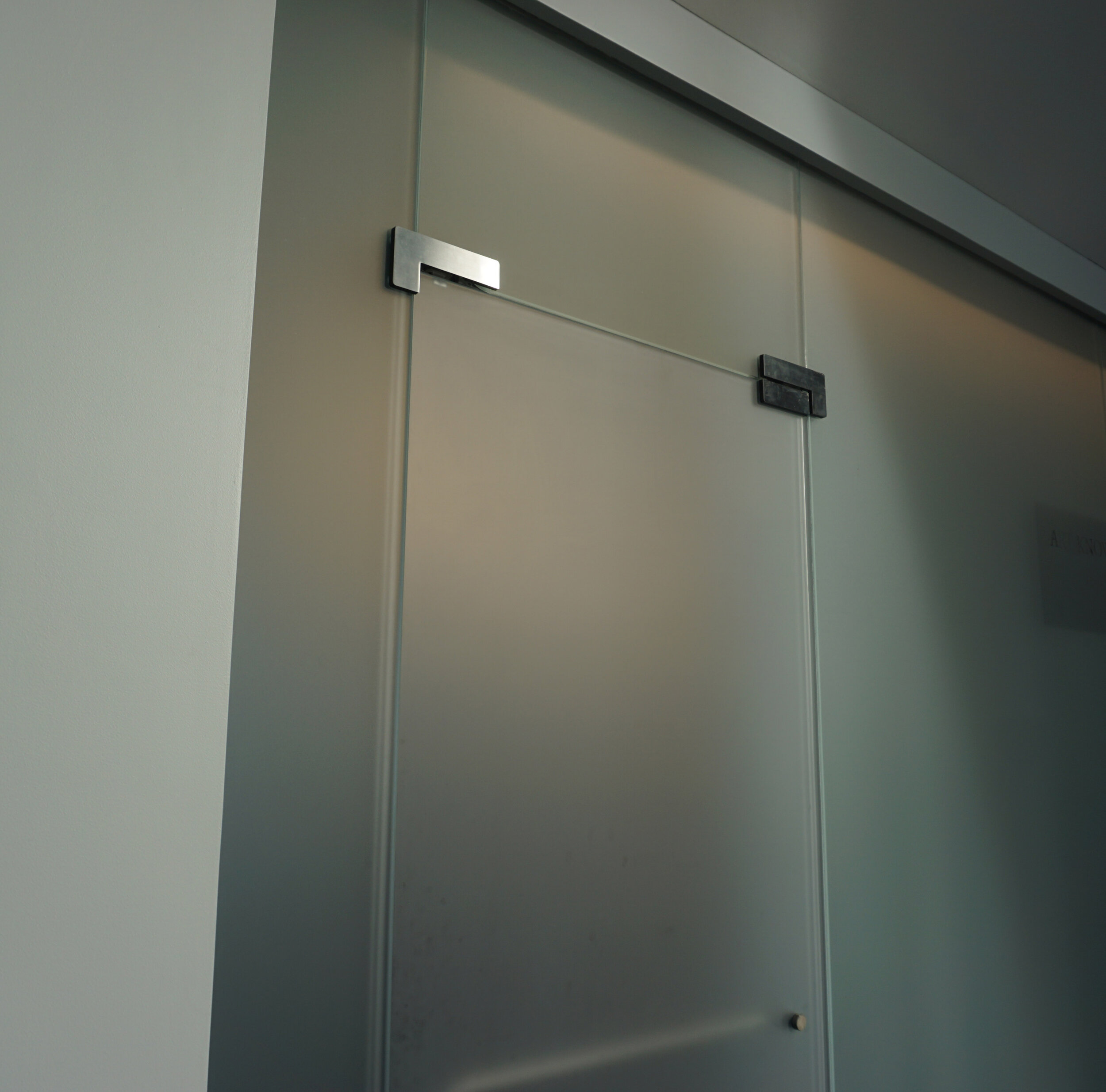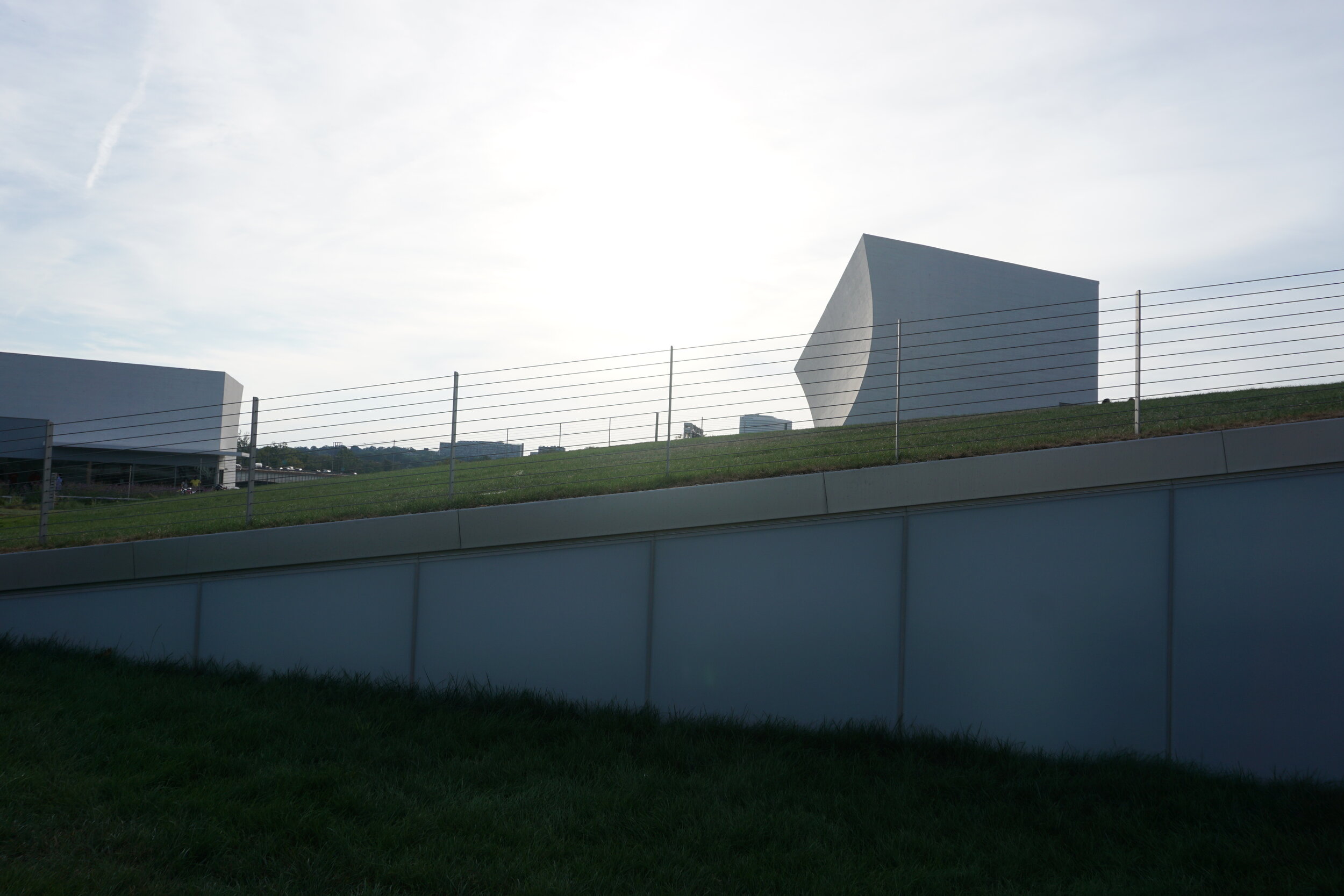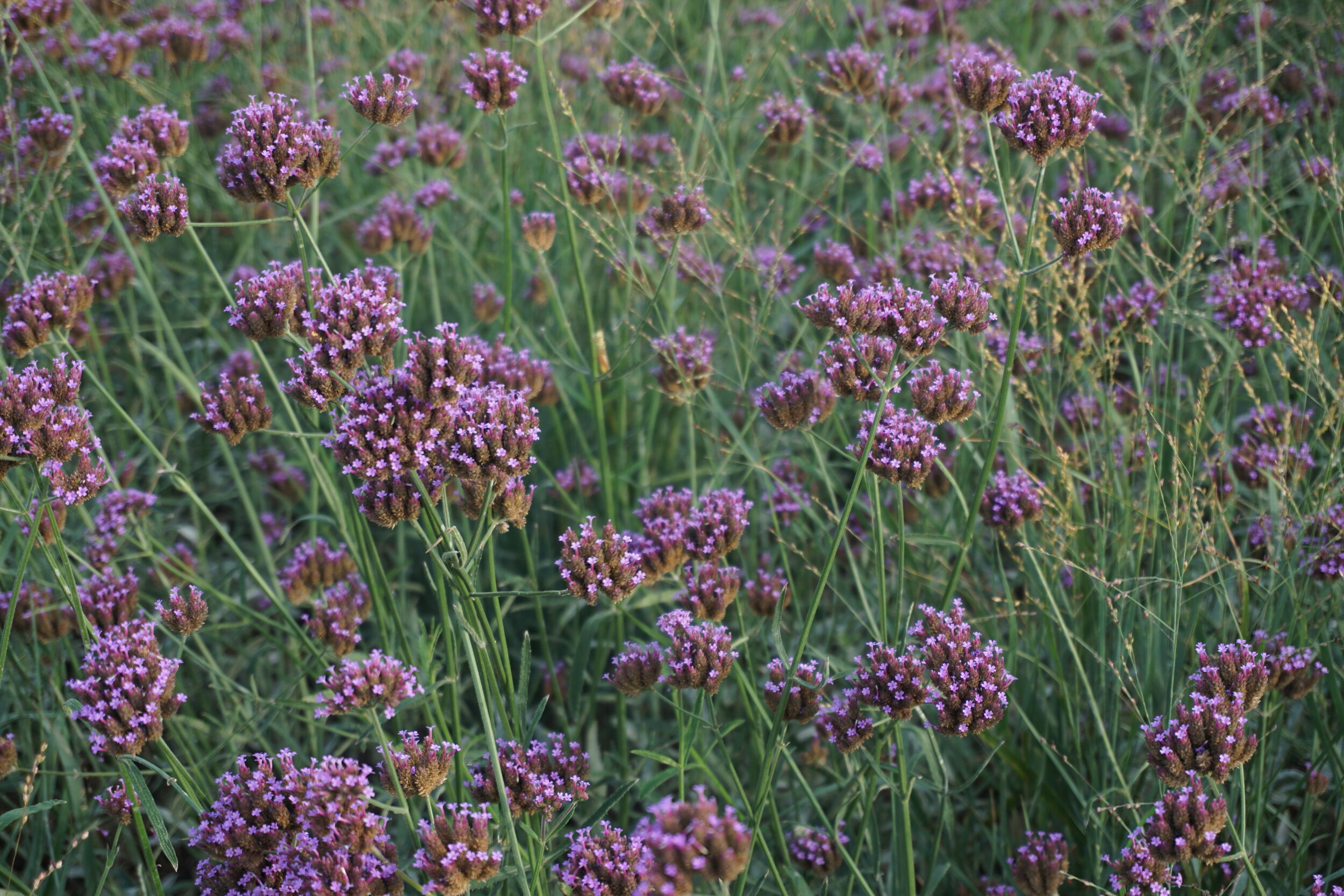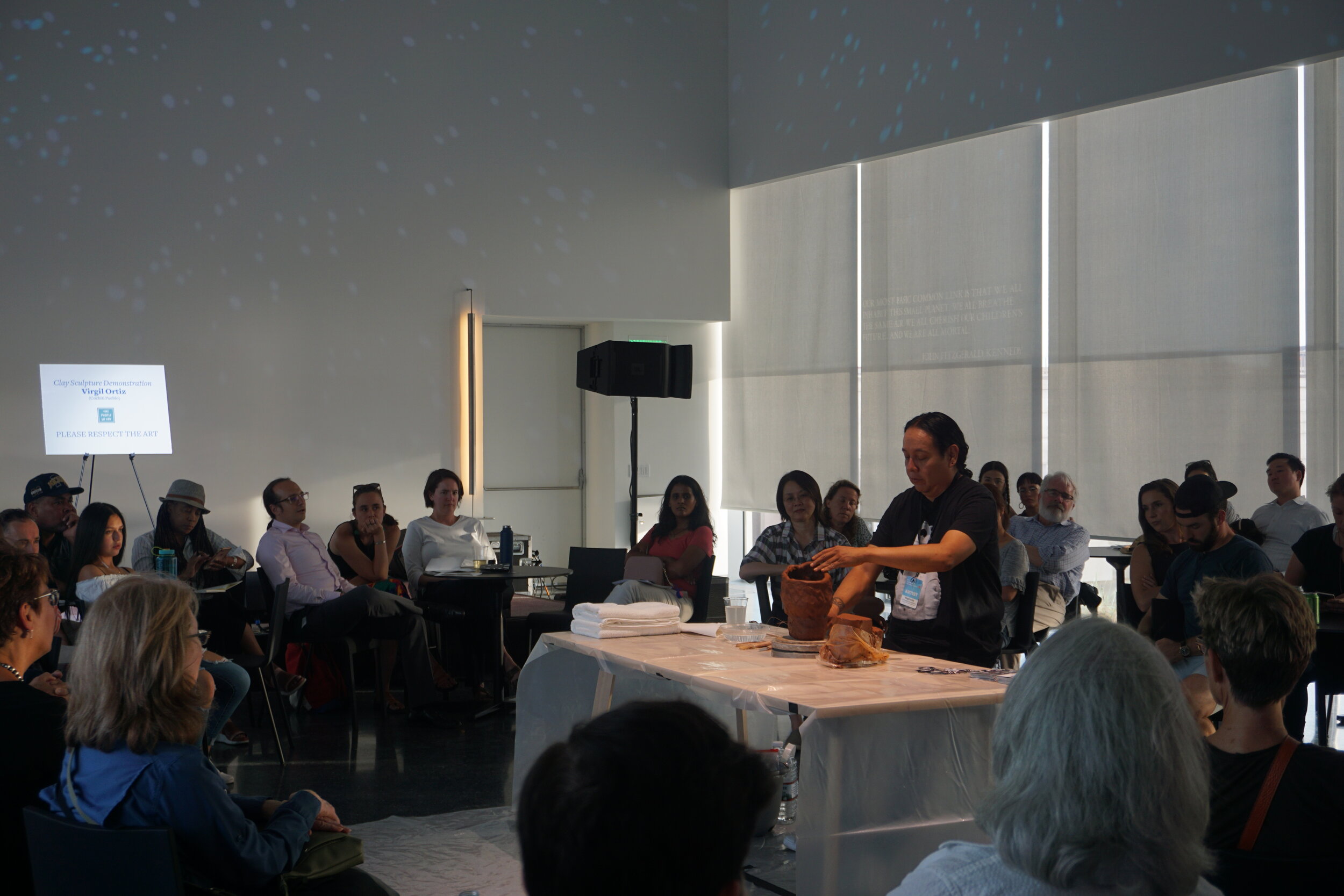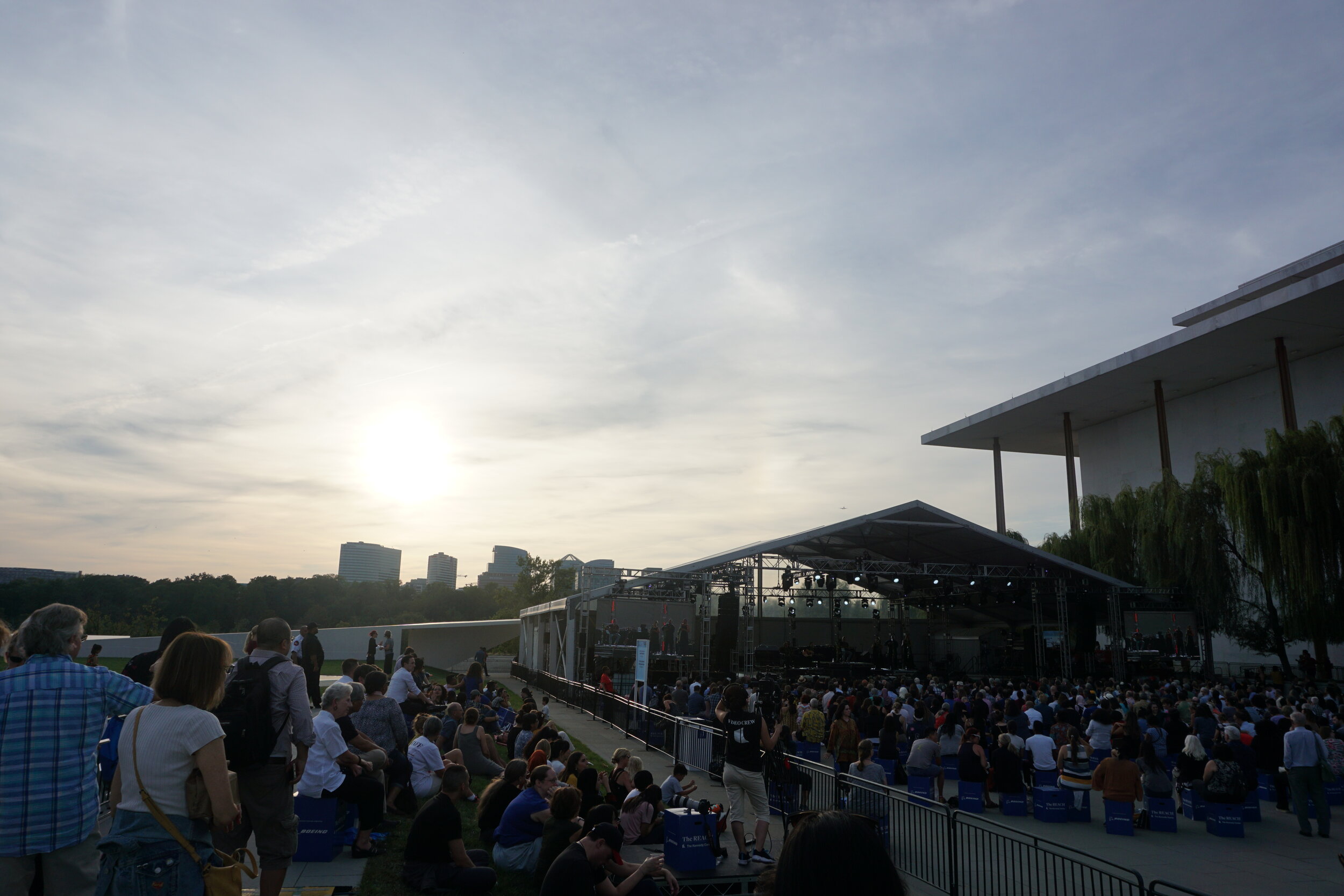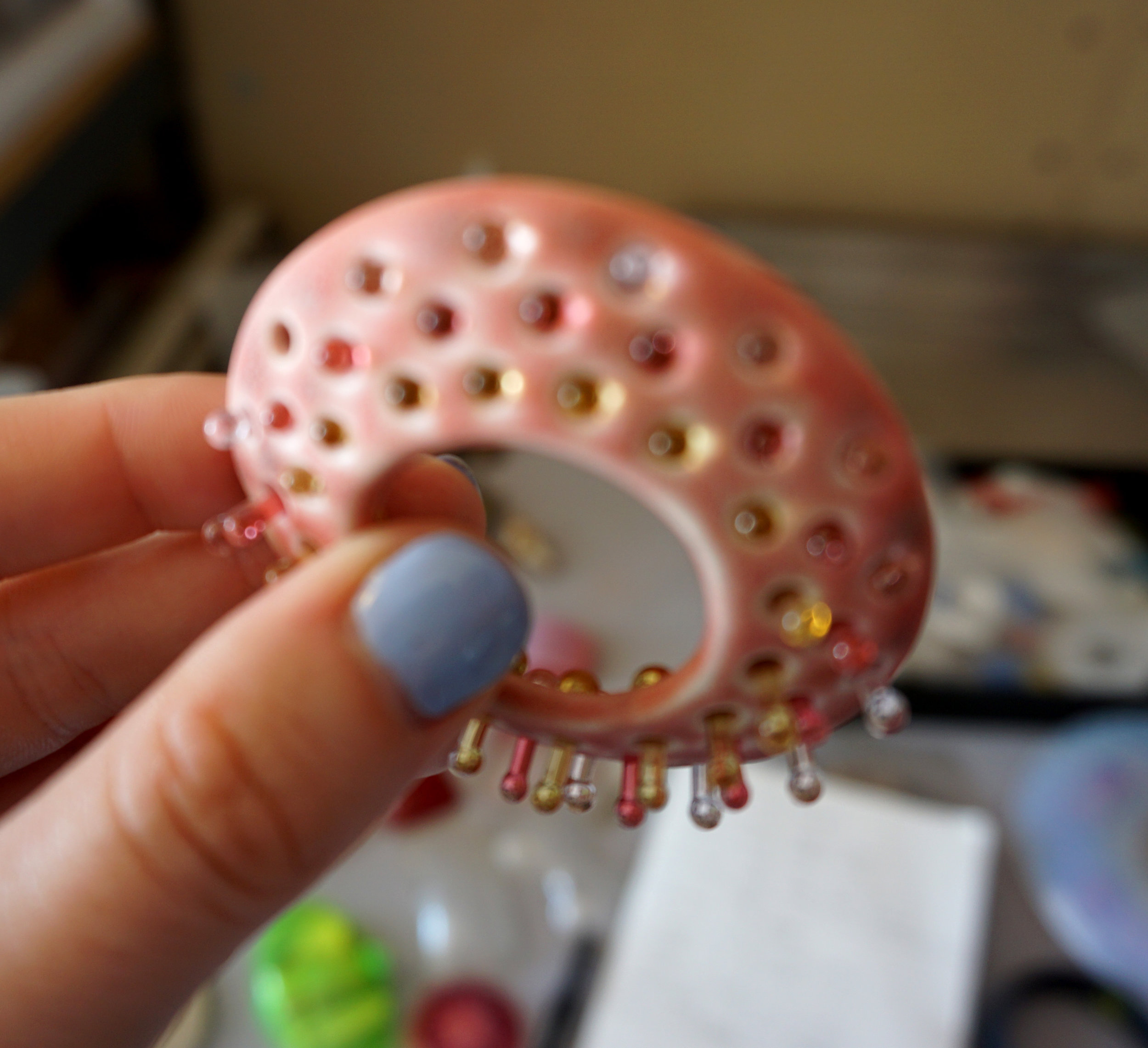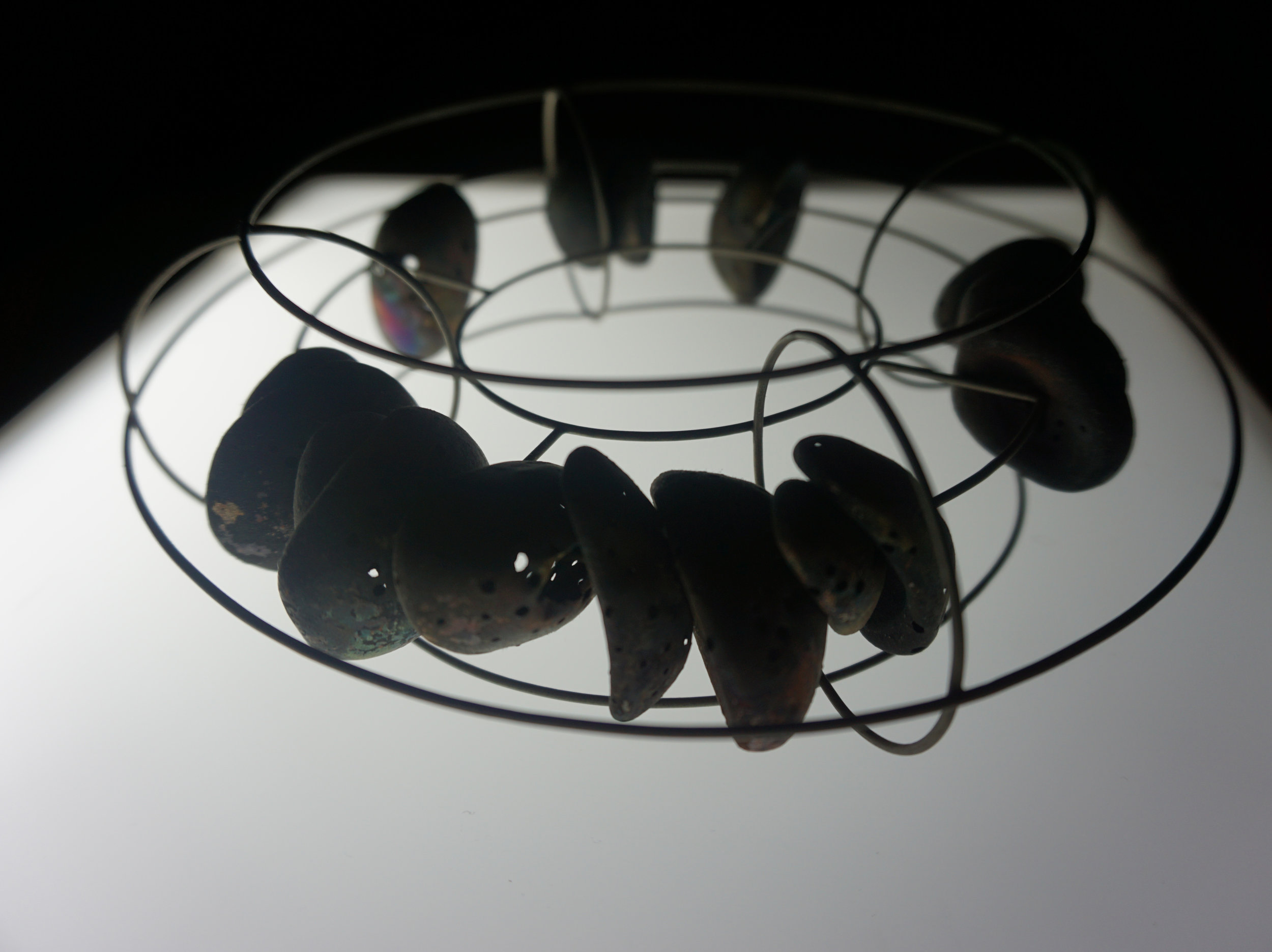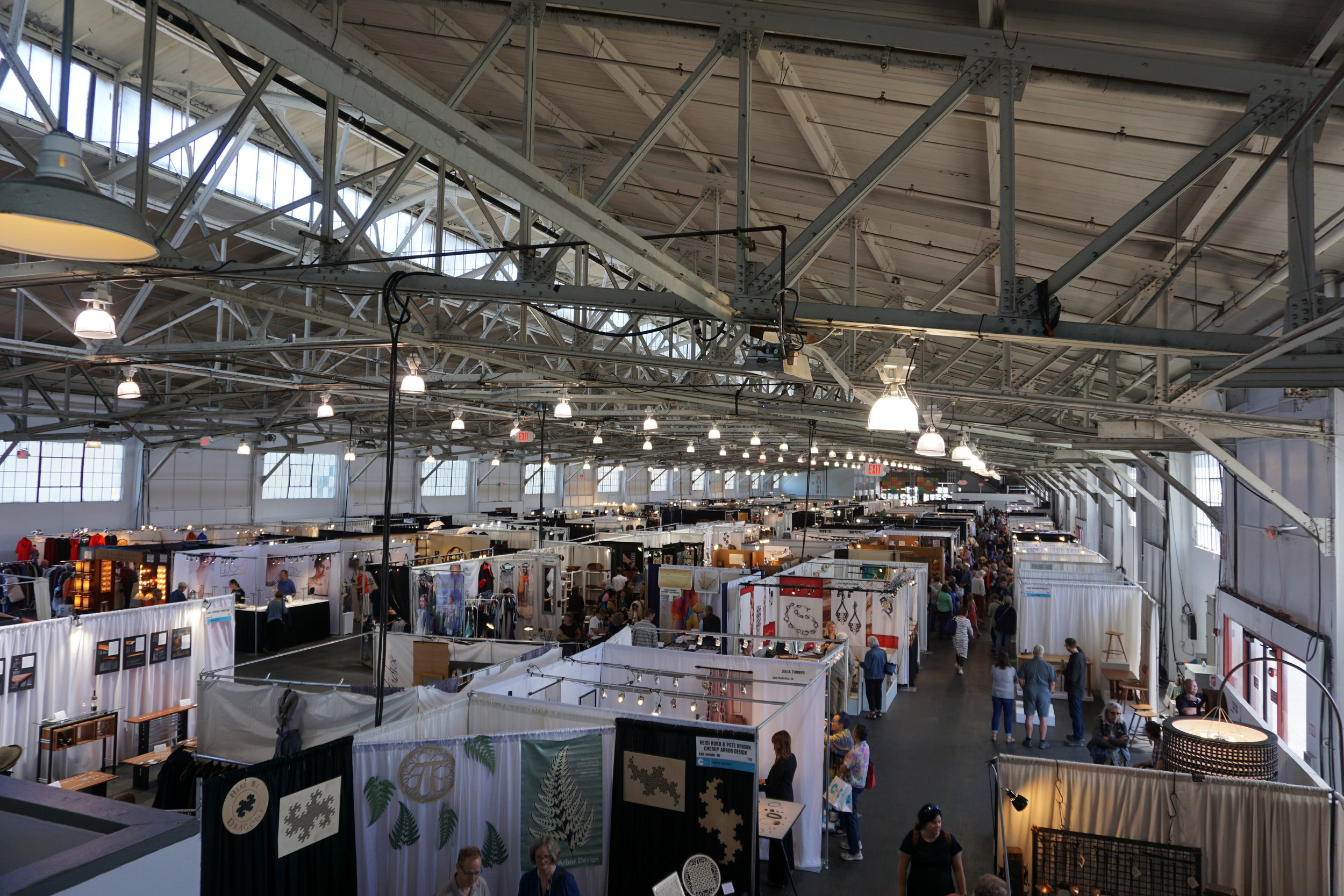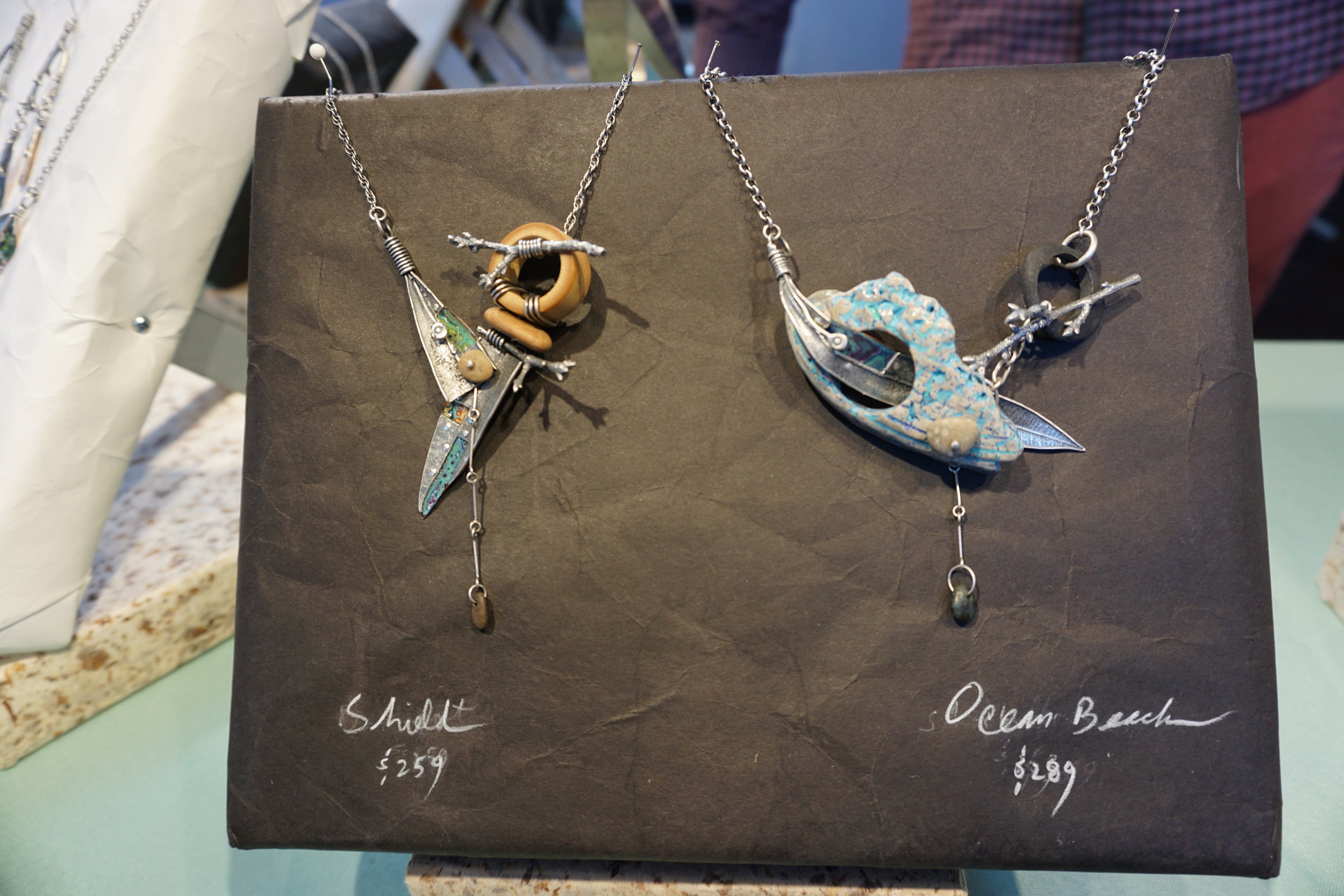Christopher supported Amrita’s point, sharing a paraphrased quote from Tlingit writer Ernestine Hayes, “modern life and amenities would still exist without colonization; paved roads, air travel, computers, etc., but it would have the values of Native and Indigenous people underpinning it all.”[2] Ty Defoe furthered the thought, connecting to his experience and thinking for future generations: “I grew up [during] language revival and how it related to food, dance… it taught me everything is connected… and that if you’re not dreaming seven generations ahead, you’re not dreaming big enough.”
David added, “Some of what has happened to indigenous people has made it difficult to dream big. It’s in our DNA to dream big, but that has been diminished… It’s hard traveling the world with my art.”
Amrita’s video of her dance and the provocative nature that comes with being fully present in your body was a huge “aha” moment for the crowd. “You are born with a political body whether or not you choose to identify that way.” She sees the body as a form of ultimate resistance. “I truly believe that everything on my body, from how my nails grow, my hair… comes from a long line of resistance within my family. As much resistance as it is embrace – it’s culminated to where I am now. How do we take [our identity] on with brilliance and spectacle?”
David regaled progress in recent economic independence in Australia. “We (indigenous people) are now better able to participate in the local economy.” There are high levels of unemployment among indigenous group of people. However, an important thing to note is that “indigenous run businesses employ other indigenous people at appropriate levels.”
Christopher: How do we shape our own futures? How do you define success for yourself?
David responded, “I know I’ve reached success when I feel it within my own community. It’s how we are connected – their acceptance and support.” Ty recounted a recent encounter where, after a show, someone came up and grabbed his hoop after his performance. They were so moved by his storytelling he gifted the hoop to them. For him, claiming his community is just as important as the community claiming him. Amrita replied, “Success is always shifting.” It’s important for her to have a good balance and still get to see her family; “being able to investigate everything [she’s] interested in doing” is a good indication of success. As someone that has fallen many times, I respected her honesty in her next explanation, “Success is being able to be in the multiplicity of everything… To be able to fail with grace, which is especially hard in the arts…it takes multiple amounts of failure.”
Christopher: What would you tell native youth to do today?
Ty quickly responded with a sly grin, “Cause as much trouble as possible.” After a second thought, he added, “ask the question ‘why?’ It’s another way of decolonizing – we are always living in concert and chaos.” Elaborating, he said, “Curiosity is the mark of intelligence… to give them hell but ask the questions.”
David added sagely, “be bold; but do it respectfully.”
Audience member: How do you stay connected when you’re on the road so much?
Amrita laughed and confessed she spends a lot of time on Facebook, but also enjoys weaving or other crafts that connect her to her community. Ty spoke lovingly of the Two Spirit community that he is a part of, and how the elders are always watching him - and his shenanigans.
Audience member: How do you keep joy with what’s happening to the planet?
Amrita was honest and confessed, “Sometimes I don’t.” The good news is, “[the planet] is shifting so we can too.” Ty and David agreed that there’s still something in the act of doing. Ty chimed in, “everything in history class you learned – even in the lower 48 was a lie.” He referenced how Turtle Island (North America) has historical amnesia, and how part of addressing climate justice involves decolonizing things that were placed on indigenous people.
Audience member: How can everyday people support the long and powerful legacies of indigenous people?
The artists were completely blown away by this question, as well as by the young age of the person who asked it. The moderator gave her the mic to turn and face the crowd to repeat the question. The panelists agreed that land acknowledgement is hugely important for every meeting and to honor the peoples that once inhabited that land prior to colonization. They also pointed out that we each need to find our place and how we fit into that fabric – how to connect the personal to the universal is key. Ty chimed in there are great online resources to support your own research. And while research is helpful, it’s even more important to connect with people directly. David said “lots of reading and asking questions. Do your research. Connect with whose land you’re on.” Amrita encouraged the audience to invite native speakers to events, but to also be patient with them. She explained that they might not accept right away because they don’t know you, but to extend the invitation several times for them to warm up to you.
Audience member: How, as artists, do we avoid whitewashing? How do we keep the resistance in our hands when colonizers often purchase resistance?
The earnestness, fear, hurt, and hope in the audience member asking the question once again shocked and delighted the panel. The question hung in the air with perceptible weight - in an establishment such as the Kennedy Center, which has built its legacy on performances aimed towards predominately white audiences, the artists knew precisely what this audience member was asking. Amrita agreed with his points of capitalism encouraging the commodification of authentic soul-filled art from people of color and mused, “Where do you place your integrity in that?” [Under the white gaze], where at the scale of commodification/capitalism are you willing to draw the line?” Getting more energized, the moderator turned to face the audience and said “It’s important to remember ultimately institutions are made of people. I believe deep and lasting change requires people working in a range of ways, both within and outside of institutions. It takes people who can infiltrate those institutions and work from inside of it, AND it takes people on the outside working to effect change, including people who are willing to blow things up!.”
[2] Excerpt from What Shall We Do With Our Heroes by Ernestine Hayes: “We do well to remind ourselves that had the colonial invasion not taken place, Indigenous people would still be living in the twenty-first century. Our lives would still be modern. Paved roads, airports, and electricity would still occur. Some things would be different. We would all be speaking our own languages. Our children would be receiving educations meant to lead to their success. We would not be so vulnerable to incarceration, alcoholism, poverty. We would be healthy (Hayes)”. We would all be speaking our own languages. Our children would be receiving educations meant to lead to their success. We would not be so vulnerable to incarceration, alcoholism, poverty. We would be healthy.










